Facts about Mould and Safety Tips
The Dangers of Mould In Your Home
- Moulds produce allergens, toxins (mycotoxins), and/or irritants.
- Moulds are a major source of indoor allergens.
- Moulds can also trigger asthma.
- The mould spores may be toxic by inhalation
- Some moulds are capable of producing carcinogens (e.g., aflatoxin produced by Aspergillus flavus)
- Dead mould is still allergenic, and some dead moulds are potentially toxic.
- Dead mould may still cause allergic reactions, so it is not enough to simply kill the mould, it must also be removed.
- It is necessary to remove all of the mould contamination, including the microscopic spores in the air.
- Physically disturbing the mould will cause the spores to spread.
- Moulds cause odour problems, discolouration, staining and cosmetic damage
- Mould growth can eventually cause structural damage to a building
- The longer it grows the more damage it will cause
Do-It Yourself - USE CAUTION:
Investigating and testing for hidden mould problems may be dangerous.We recommend individuals untrained in bio-containment abatement procedures do not attempt to perform remediation on moulds with an aggregate area of contamination of 10 square feet or more. (regardless of the type), or on those moulds, (regardless of area), which are considered to be toxic or pathogens.
- Mould may be hidden in places such as the back side of dry wall, wallpaper, paneling or under carpet padding
- Removal of wallpaper, for example, can lead to a massive release of spores from mould growing on the underside of the paper
- Discard mouldy items that can't be cleaned or treated
- Don't forget to address the source of the moisture problem, or the mould problem may simply reappearing as little as 24 to 48 hours
- If the water and/or mould damage was caused by sewage or other contaminated water, then call in a professional
- Use of commercially available products:
- The use of a chlorine bleach, for mould remediation is not recommended
- Biocides are toxic to humans and pets, as well as to mould; follow the instructions
- Do not use fungicides developed for use outdoors for mould remediation or for any other indoor situation.
- Some companies advocate the use of Chlorine Beach as a mould remover. We DO NOT use chlorine bleach [sodium hypochlorite] to kill mould or disinfect mouldy areas.
Safety tips to remember when cleaning mould:
It is important to take precautions to limit your exposure to mould and mould spores:
- Do not touch mould or mouldy items with your bare hands
- Do not get mould or the mould spores in your eyes
- Do not breath in mould or mould spores
- Use Personal Protective equipment - N95 respirator, gloves and eye protection when investigating for mould in your home.
- Wash or shower well with soap after potential exposure to mould or mould spores
- Take care not to disturb mould spores
- A small area that is contaminated and has the potential to distribute mould to other areas even during the cleanup
- If the mould problem is more than 10 square feet or if you've tried cleaning it yourself and the odour persists you need professional consultation.
Eco-Impact and Mould Experts
We find the problem and give you solutions.
We do Large and small projects mould inspection, testing and remediation projects
Treatments suitable for crawlspaces, attics, unfinished basement and carpets
Mould prevention treatments for new homes and buildings under construction - product guarantees
Treatments for flood damaged, water damaged and fire damaged buildings
Call for an appointment. Telephone: 778-786-1552 or 604-628-7224


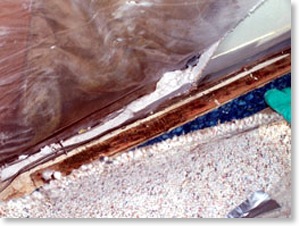 Mould behind the baseboard and under the carpet
Mould behind the baseboard and under the carpet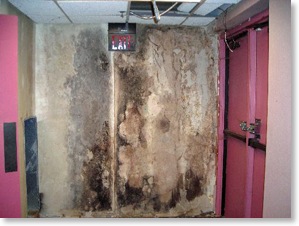 Mould on a wall of a vacant movie theatre
Mould on a wall of a vacant movie theatre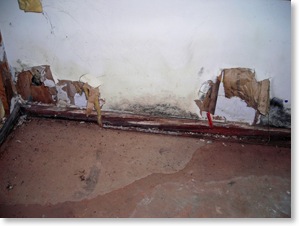 Mould on drywall - after the area was flooded
Mould on drywall - after the area was flooded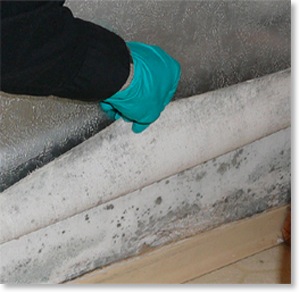 Mould behind wall paper
Mould behind wall paper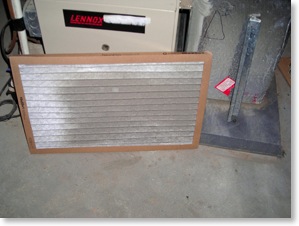 Dirty air filters can cause air quality problems in a home or office
Dirty air filters can cause air quality problems in a home or office